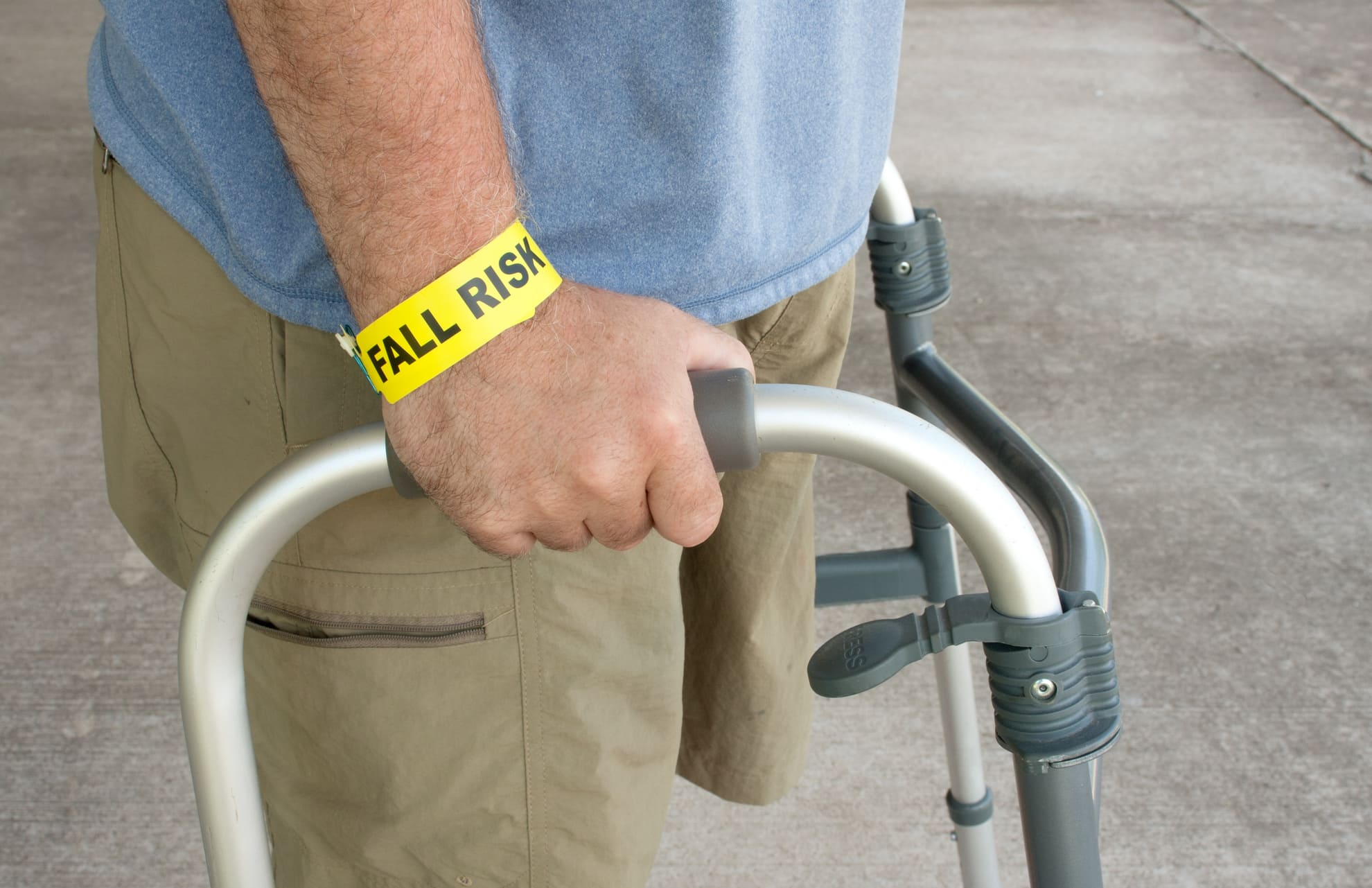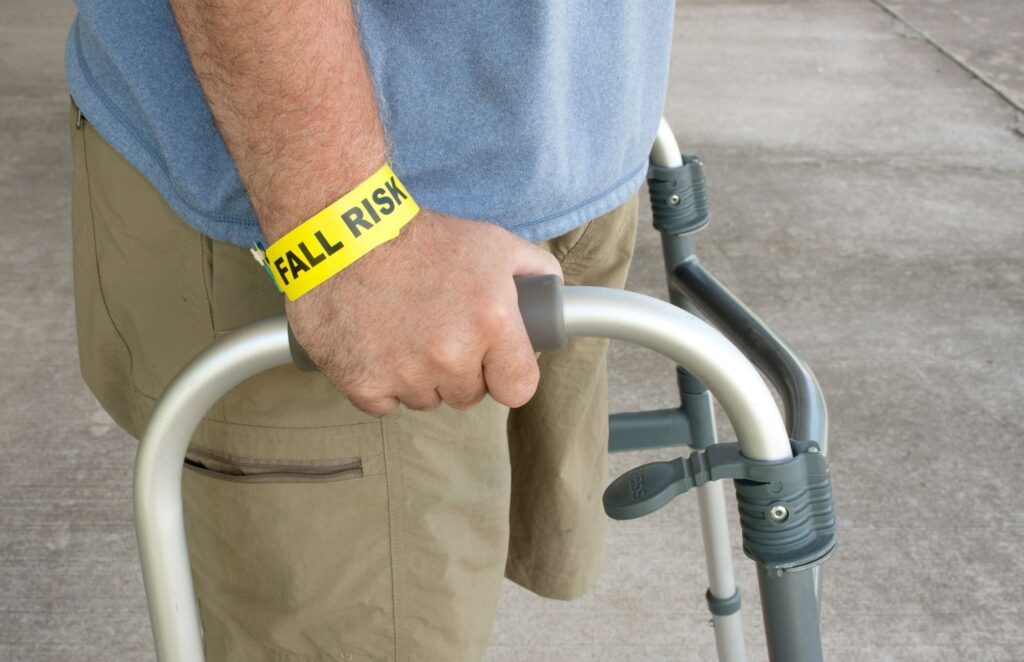October 25, 2022

Approximately 1 out of every 3 adults over the age of 65 that live in their own home experience a fall at least once a year. Additionally, 50% of the individuals living in a skilled nursing facility also fall at least once per year. Performing fall risk assessments at least once a year, on patients 65 years and older, can have a significant impact on this statistic.
The decrease in balance and mobility associated with the aging process is responsible for this increase in falls; along with impaired vision and chronic illnesses. These falls often result in injuries like broken bones, and concussions, and in severe cases can even lead to death.
According to the US Preventive Services Task Force, a clinical assessment that takes several factors into account combined with the proper interventions, can effectively reduce falls. Especially when combined with appropriate follow-up care.

What is a Fall Risk Assessment?
It’s highly likely that you have performed at least a couple of Fall Risk Assessments (FRA) throughout your career. But in case it’s been a while, let’s review.
A fall risk assessment consists of several functional tests that assess the patient’s gait, strength, and balance. When the data from all of these tests are collected and compared, you will be able to determine the general probability that an individual will experience a fall within the next 12 months.
Typically, an assessment should begin with a simple fall risk screening. Including questions regarding the overall health of the patient; as well as any history of falls or problems standing, walking, or maintaining balance. For example:
- Have you fallen within the last 12 months?
- What kind of medications are you on?
- Do you feel unsteady while you are standing still or walking?
- Are you constantly worried about falling?
- Do you require help with your daily activities?
These questions are an important part of determining an individual’s risk of falling.
After that, the physical performance tests will be conducted. The following tests make up the webFCE fall risk assessment:
- 5x Sit to Stand
- Timed Up & Go (TUG)
- Single Leg Stance (SLS)
- Self-Paced Walking Speed (SPWS)
- Berg Balance Scale (BBS).
The webFCE Fall Risk Assessment
This research-based assessment is made up of 12 tools that evaluate and calculate your patient’s exact risk of falling. In order to create this assessment, we looked at over 2,200 fall risk studies and over 12,700 population norm studies. Once the results of each assessment tool are combined, our complex algorithm calculates one of the most accurate fall risk determinations.
This test can be used to predict the probability of falls over the next 12 months for the older adult population, as well as middle-aged and healthy young adults. It will also automatically generate goals and interventions to help your patients improve upon their weaknesses and reduce their risk of falls.
When Should You Conduct an FRA?
Typically, it is suggested that a fall risk evaluation be done every year for anyone 65 years of age or older. However, it is also appropriate to complete the assessment anytime there is a significant change in your patient’s medical history. Such as:
- Injuries
- Illnesses
- Altered mental status
- Recent falls
This is imperative as it will tell you how much the individual was affected by the event and whether or not they are ready to return to their prior living arrangements and activities of daily living.
Conducting an initial FRA can be a great way to establish a patient’s physical baseline. Conducting regular and consistent assessments after that provides you with an accurate way to monitor the individual’s progression or decline.
Staying on top of this information will help you to keep your treatment plan as effective as possible. Making sure that you are focusing on the patient’s current weaknesses, ensuring they are as strong and as safe as possible, reducing their risk of falls.
What Does The Test Tell You?
Most general fall risk assessments only tell you whether your patient has a low, moderate, or high risk of falls. And if you perform your own review of the results you will be able to determine their strengths and weaknesses.
WebFCE has significantly improved upon this by developing fall risk assessment software that generates an in-depth report with an exact fall risk probability percentage.
Additionally, the report conveniently breaks down the patient’s scores for each test performed. The report will also compare your patient’s overall score with that of their peers, showing you how this individual compares to others of their same age group and gender.
What To Do With The Results?
After you have reviewed the results of this test, you will have gained a better idea of your patient’s strengths and weaknesses. This will help to guide you in the right direction of appropriate goals.
In addition to providing you with a comprehensive in-depth report, webFCE also uses these specific outcomes to generate customized goals for your patient. On top of that, the report also generates interventions and exercises that will help the patient reach those goals and reduce their risk of falls.

The Importance of Conducting Fall Risk Assessments
At least 800,000 people are hospitalized every year because of a fall related injury. Of course, the biggest benefit of performing this evaluation is to gain awareness of any weaknesses and prevent falls before they happen.
In turn, also preventing injuries and hospitalizations which can lead to several other dangerous health conditions or even death in the more severe cases. Traumatic brain injuries are most commonly caused by falls, according to research. Decreasing someone’s risk of falls also improves their level of independence, as well as their quality of life.
It has never been easier to perform a high-quality fall risk assessment and put a plan of action in place to address a patient’s weaknesses and prevent future falls. You can begin preventing falls and perform your first assessment today by clicking here.
Frequently Asked Questions
What is the best fall risk assessment Tool?
The webFCE fall risk assessment is a comprehensive assessment that takes into account the patient’s medical history, daily activity levels, strength, balance, and gait pattern. A personalized report is generated with the results, a comparison to the patient’s peers, and suggested goals and interventions.
How do you manage fall risk?
You can improve your balance and decrease your fall risk by performing regular exercises to improve and maintain strength. Some of these exercises could include dancing, walking, or training programs with a physical therapist or trainer.
What are some common causes of falls?
There are several reasons that someone may fall, including poor balance, decreased strength, and side effects from medication. But there are some other things that may lead to falls as well. Such as dehydration, inner ear problems, irregular heart rate, and postural hypotension.
How do you assess a patient for fall risk?
You would start by getting their medical history and performing the general fall screening. You will then perform the tests that make up the assessment to get a better idea of their level of strength and balance. The data collected will help to determine their risk for future falls.